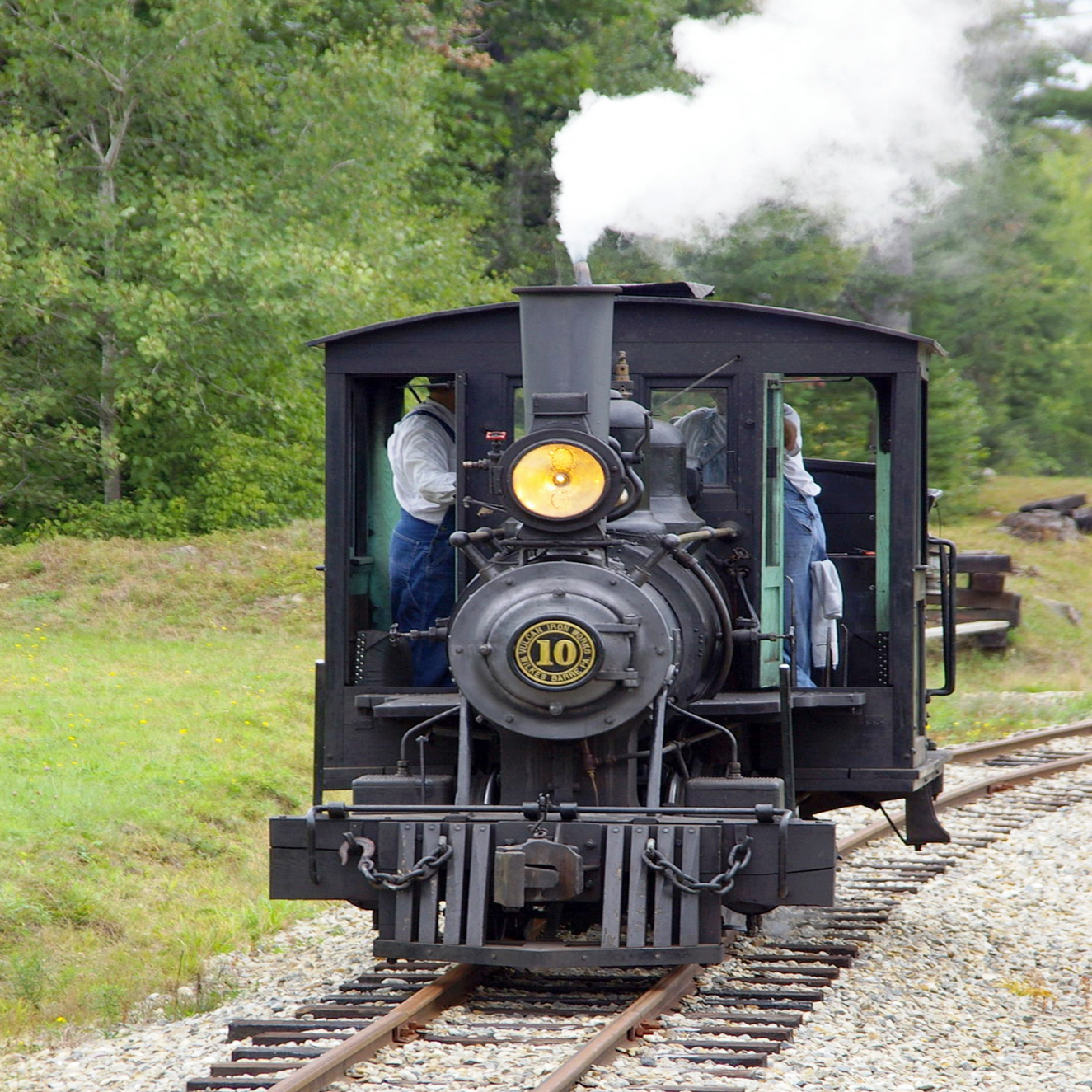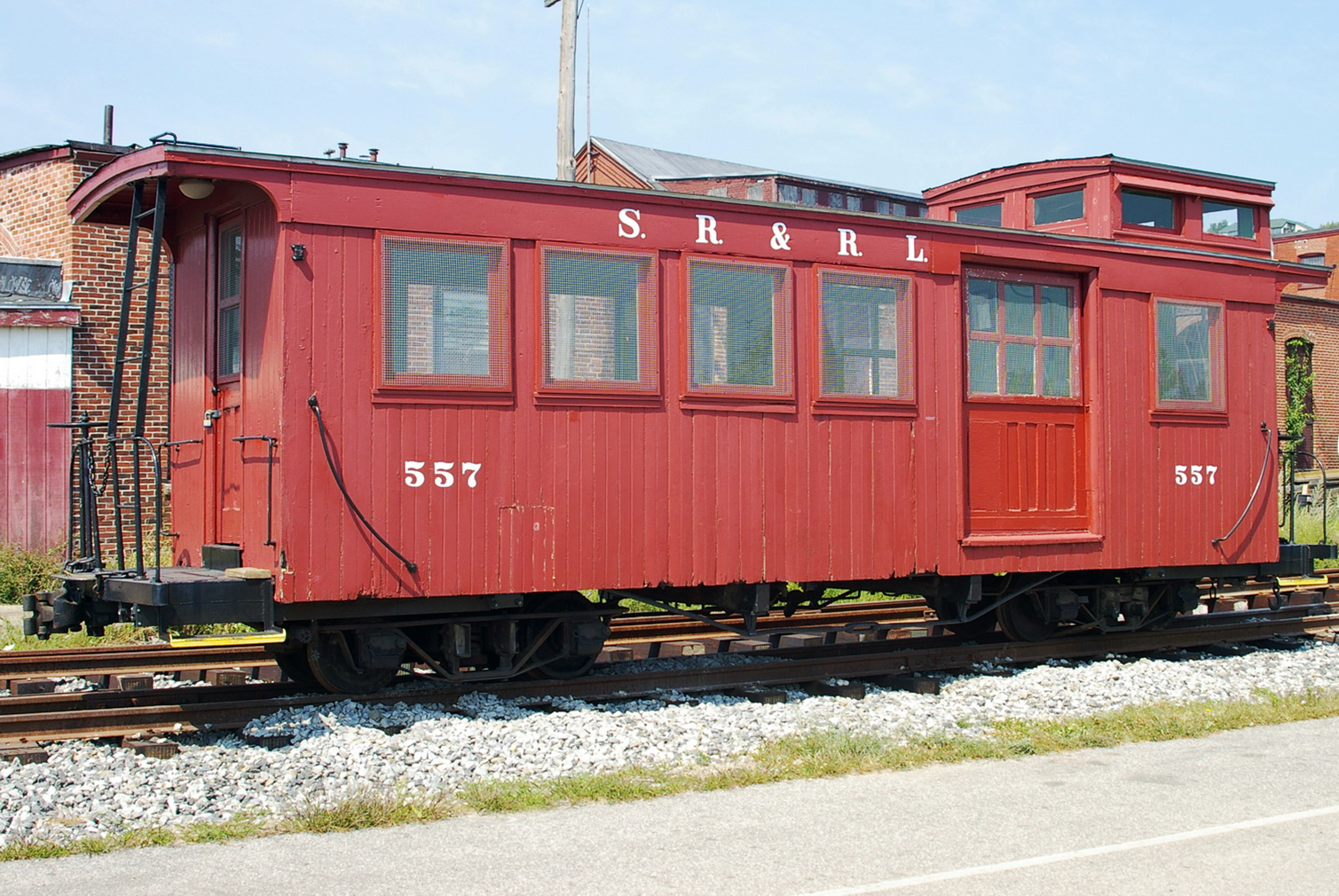Journey to the Land of The Two Footers and Lobstah
By Ben Bartlett
This journey actually started the summer of 2006 when I learned that the 27th National Narrow Gauge Convention would be held in Portland, Maine. I had heard many positive things about the Narrow Gauge National Conventions. Having been to NMRA Nationals my wife and I decided to try a Narrow Gauge National Convention for comparison. It was an ideal location since it was only two hours from our daughter’s home, and so we could do a family visit at the same time. The first thing I was told was “make your hotel reservations early”. The week after the 2006 convention I heard that the Portland convention hotel was almost sold out. Having to make hotel reservations a year early was unique, to say the least.So now, eleven months after making hotel reservations, we departed for New England. Narrow Gauge conventions start on Wednesday, with early registration on Tuesday afternoon. Tuesday afternoon we arrived in Portland, Maine. First we checked in at the reception desk. A good first impression, paperwork was available, name tags were spelled correctly, and everything was in the package. We were also given a packet of instructions for the layout and museum tours. A check of the schedule shows nothing is scheduled from Noon ‘til 6:30 PM. Gotta rethink how you plan your activities. We decided that thinking could be best done on the waterfront with Lobstah and some liquid refreshment. This will not be the only time we will do this.
Wednesday dawned clear and cool. First we made the mandatory excursion to L.L. Bean in Freeport. The next item was to contact Bar Mills and arrange for a tour. Bar Mills, manufacturer of structure kits in N, HO, S and O Scales had invited all convention goers to visit their manufacturing facility. We arrived in Bar Mills, Maine at the prescribed time. The first thing you see is the “factory” which is housed in a 12” to 1’ reproduction of the Sandy River & Rangeley Lakes RR station at Strong, Maine. Once into the waiting room we were greeted by the owner Art Fahie. He invited all to spend some time viewing The Wharf Street layout recently featured in RMC and the samples of Bar Mills kits. The tour of the manufacturing areas was next. First stop was the area where the wood stock is cut. There were four laser machines in this area. We observed one machine set up and cutting board fence blanks. The production manager explained how the laser worked, and how the programming was done. The next area was the spin casting area. We learned about the process, the tooling and had a demonstration of the process. We then went to the area where the parts and pieces are brought together to create a kit. We saw an example of the process used to package each kit. Next stop was another laser area where paper products, such as shingles and tar paper roofing are laser cut in seconds. After making some purchases, we returned to the convention hotel for an evening of clinics and a tour of the vendor’s area.
Thursday dawned cool and clear. First stop was the contest room where I stood in line for about 15 minutes to register my model. The contest judging is public voting, so the paperwork is minimal. Once your model is registered you have to locate where your model is to be displayed. There were fourteen (14) model classes, plus Best in Show and seven (7) special awards. The contest manager had decided to try putting the tables on 30” PVC pipe leg extensions. Viewing the contest models was very easy. The final contest entry total was 168 models and 40 photo entries. Now, off to some clinics, another tour of the vendor rooms. I did not realize how many companies are now making laser-cut structures.
 After lunch we decided to visit the Maine Narrow Gauge Railroad Museum in Portland. We got to ride on their
steam powered excursion train. The train was powered by Monson RR Forney (0-4-4T) #4, and included an enclosed
combine, two open coaches and a Sandy River & Rangeley Lakes caboose. We stopped at the end of the line for photos.
The museum rails are on abandoned GTW/CP right away and two foot gauge rails really looking strange on standard gauge ties.
After lunch we decided to visit the Maine Narrow Gauge Railroad Museum in Portland. We got to ride on their
steam powered excursion train. The train was powered by Monson RR Forney (0-4-4T) #4, and included an enclosed
combine, two open coaches and a Sandy River & Rangeley Lakes caboose. We stopped at the end of the line for photos.
The museum rails are on abandoned GTW/CP right away and two foot gauge rails really looking strange on standard gauge ties.
The highlight of the return run was a photo runby. We stopped part way back; photographers detrained. We got to photograph a “High” speed runby of the Forney with full head of steam, whistle blowing and two bicyclists riding by on the walking path waving at the photographers. Some days nothing goes quite right. Back to the hotel, more Lobstah and then some evening clinics and time for some relaxation.
Friday dawned foggy after a night rain. First a quick trip to the contest room, I have to get my ballot in and some more model photos. Next I had to decide if more clinics or another tour of the trade show is the way to fill the morning. Several folks had told us that the Wiscasset, Waterville and Farmington RWY Museum was a “must see”. We rescheduled the day’s activities and set out for Wiscasset. The first thing you see is the reproduction of the Sheepscott station and freight house. We were told we could go anywhere, climb on anything and photo anything. This really was the early 20th century!
We had arrived just in time to catch the return of the noon train. Around the bend came the train, steam clouds, whistle blowing this looked like it was going to be fun. Today’s engine was a 0-4-4T. The engine was originally a 30” gauge plantation engine that had been regauged to two foot gauge as part of an early overhaul. The train consisted of an enclosed coach, and an open coach. The noon train riders were detrained and then the engine was uncoupled and run around the train to prepare for the 1:00 PM departure. The 1:00 PM train departed in a cloud of smoke, cinders and steam, as we set off on a two mile journey into the past.
As we left the yard we passed the reproduction of an enclosed water tank, winters do get cold up heah! We also passed an original WW&F shingled shed. We then proceeded past the reproduction of the Alna Station and on to the end of the line. The return trip included a stop at Alna (Photo Op) for the engine to run around the train, and then back to Sheepscott. Many photos later we departed for Portland. Now sorry we had not made the time to go to the Sandy River and Rangely Lake in Phillips, Me. We Returned to Portland for final night of clinics and another tour of the trade show.
Saturday dawned clear and we prepared to unwind. First thing was to retrieve my model from the contest room. Then we made a quick plan change. Sandy River and Rangeley Lakes Museum is only 2+ hours away. We arrived in Phillips having gotten lost only once, we did see a quite few Maine mountains and pine trees. You also get a real surprise when you go around a curve and see a yellow warning sign, with an animal silhouette, that says “Caution - High Moose Incident Area - Next 1.5 Miles” – we did not see a Moose. We arrived at the SR&RL RWY just in time to catch the next train out, lunch could wait. We departed from the restored Sanders Station and Phillips Freight House. The train was pulled by another Monson RR 0-4-4T. The train consisted of one coach and a caboose. We finally got a caboose ride!
The train proceeded to the end of the line. On the way we passed a very old Fairmont inspection car sitting at the section house. Another stop was at the shop area and time to check out the roundhouse, and turntable. On the return trip we passed a tool shed with a ball signal next it. We returned to Sanders Station after another enjoyable ride. Again we decided it was worth the trip to see the restoration of probably the most well known of the Maine Two-Footers. But it was time to head back to Portland, get some more food and go to the closing session. No banquet at these conventions. The official attendance was over 1500. Those in attendance voted to go to Bellevue, Washington in 2012. Wow! The people that attend get to pick where the future convention is held. The event was closed by Charlie Getz discussing (Roasting) the convention. Then we said goodbye to the folks met and get ready to return home. Model railroading is fun, no matter what scale, gauge or approach.
